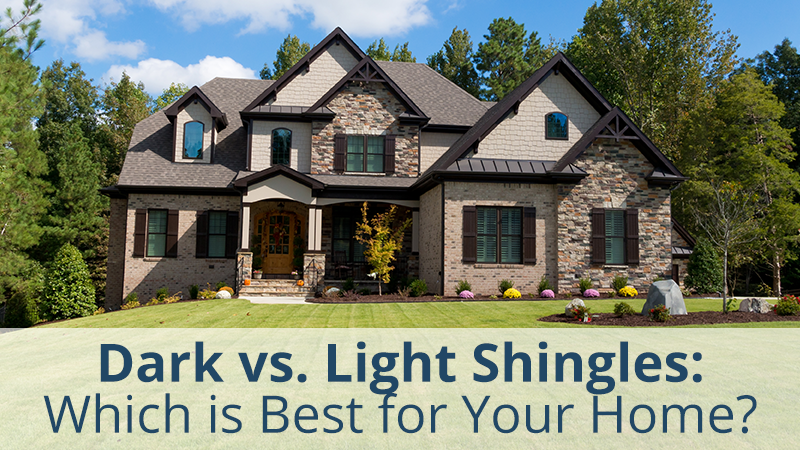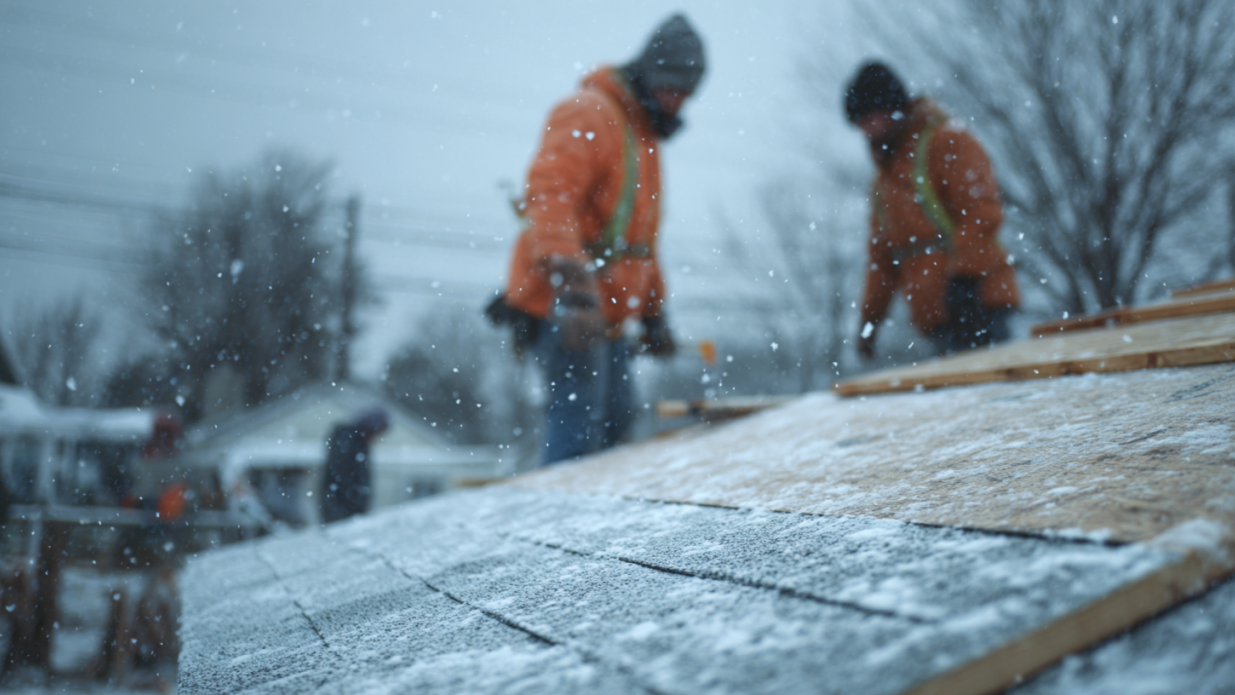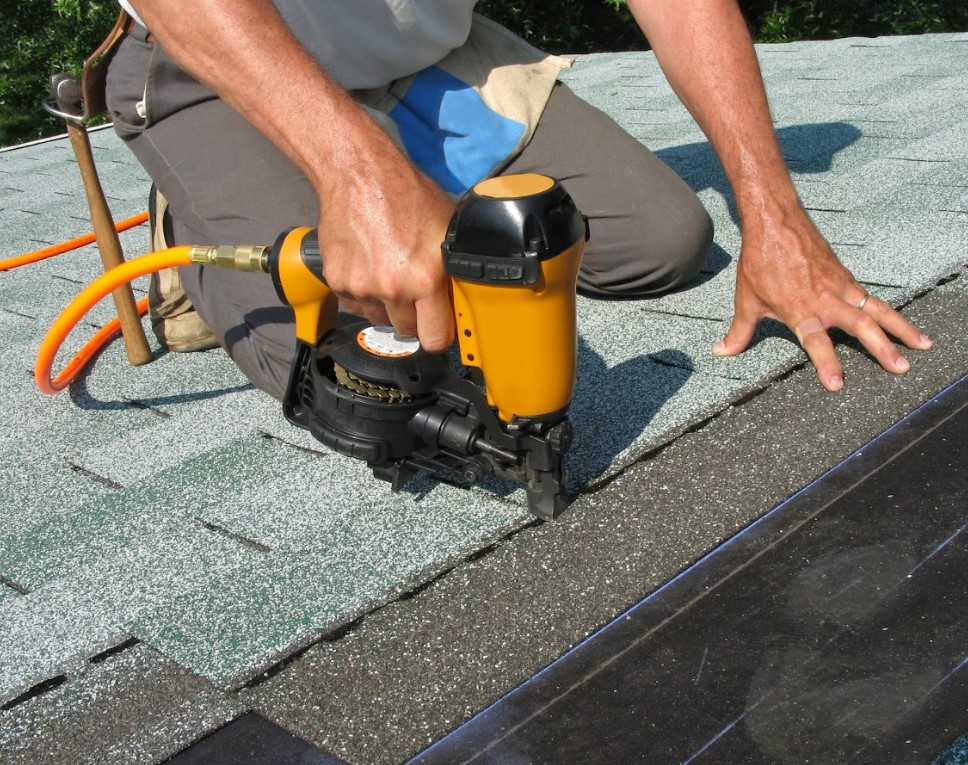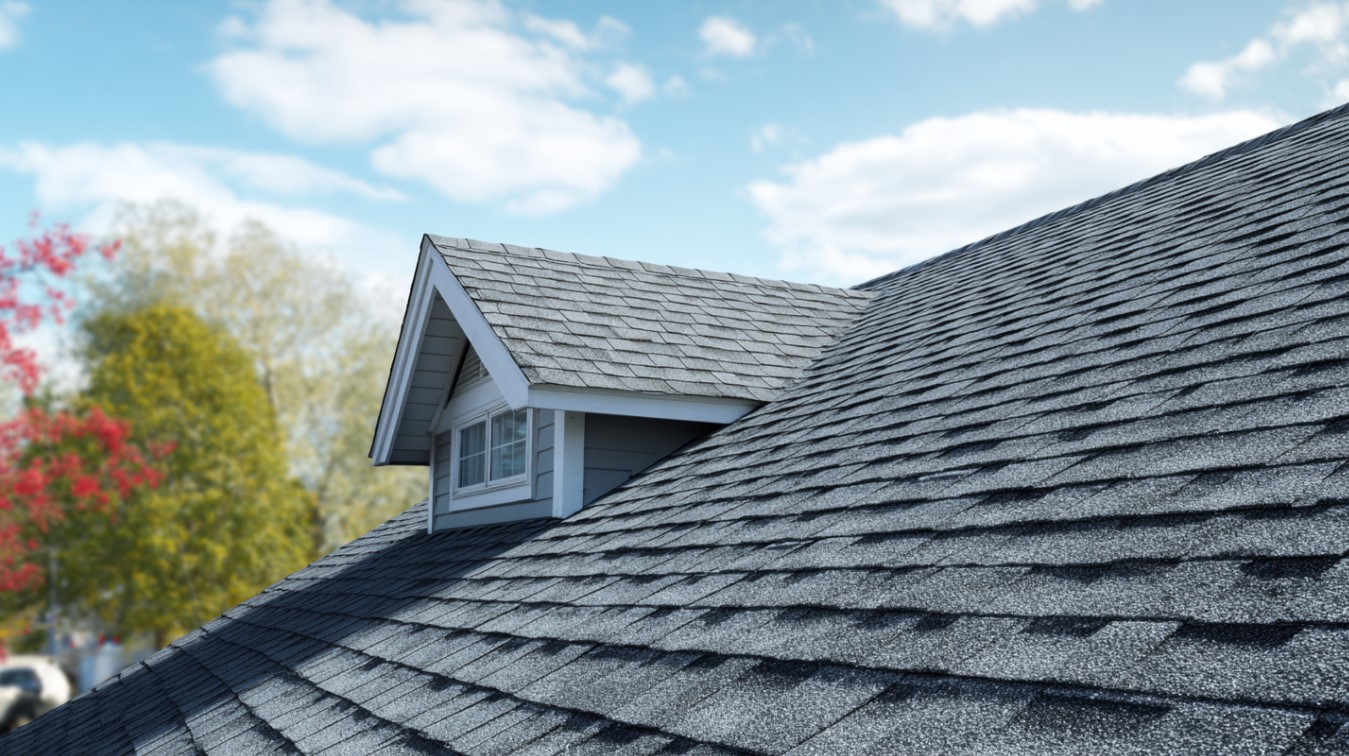Today’s homeowners have an important choice to make when it comes to their shingles — are dark or light shingles the best choice? This decision is about a lot more than just color; it can have an important impact on your home’s cooling capabilities, and how much money you spend on AC bills. Here are the big differences between the two types of shingles that you should know!
Dark Shingles
Dark shingles refer to the traditional grays (along with other more common residential colors, such as dark brown) that you can find in many houses just walking down the street. They are easy to manufacture, generally highly affordable, and protect your roof with the classic asphalt coating.
Dark shingles tend to look best when paired with lighter house colors and bolder color choices, where the shingles can sink into the background and let other elements of the house come forward and show off.
However, when hotter days come around, dark shingle rooftops do have an issue. In direct sunlight, they tend to absorb heat from sunrays quickly. This heat travels through the roof and into your home or attic. In the attic, it can cause unwanted condensation issues. In the house, this extra heat can make it difficult to cool down your home, leading to higher energy bills over time. That thermal energy is also bad for the shingles and can cause them to wear out more quickly or suffer damage more easily in the fall and winter.
The big benefit to using light shingles is energy efficiency. Lighter materials don’t absorb sunlight as easily as dark shingles. Instead, they reflect that light back into the sky. This helps the shingles last longer and helps keep houses cool during hot summer weather.
Light Shingles
Light shingles are made of very light grays and whitened panels. In most respects beyond color, they are similar to darker materials, although they may have a higher price tag because they remain more of a niche market choice, at least for now. Light shingles go well with darker siding colors, which provide a nice complement to the bright shingles.

A Note About Climate
The best shingles for your house depends on your local climate, and how much sunlight your home gets in the summer. How much rain do you get in the warmer months? Do you have any nearby trees that provide shade? These are the important questions to ask when considering a new shingle installation.
To learn more about your home structure, how it works, and what materials will work best in your next project, call us today at Rosie’s Roofing & Restoration!
Call today, a reliable roofing company in Atlanta to schedule a roof inspections! Contact us




